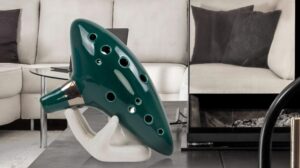
Exploring the Mystical Sounds: The World of the Ocarina
The ocarina is an ancient wind instrument known for its otherworldly and evocative sound. With a history spanning over 12,000 years across cultures worldwide, the

Hey there, fellow music enthusiasts! Today, we’re diving into the world of crafting a wooden Ocarina, a charming woodwind instrument that can produce lovely tunes.
Imagine the joy of creating your own melodic masterpiece from a simple piece of wood. It’s an adventure in woodworking and music-making rolled into one, and it’s going to be a ton of fun.
So, put on your woodworking hat, grab your tools, and let’s embark on this enchanting journey!
Before we start crafting, let’s understand what a wooden Ocarina is and why it’s so special. The Wooden Ocarina is a small wind instrument with a unique charm that has fascinated musicians and crafters alike.
Its simplicity, combined with its ability to produce beautiful melodies, makes it a popular choice for those looking to explore the world of music through craftsmanship.

A Wooden Ocarina is not just an instrument; it’s a work of art that resonates with the soul.
Crafting one allows you to blend your love for music with your creative woodworking skills, resulting in a truly unique and harmonious creation.
Now, you might be wondering how crafting a wooden Ocarina differs from making a Ceramic one.
There are several intriguing distinctions that set these two processes apart, from the materials used to the techniques employed.
When it comes to Wooden Ocarinas, choosing the right type of wood is crucial. The type of wood you select will significantly impact the sound and aesthetics of your Ocarina.
Some common choices include hardwoods like maple, cherry, or walnut. Each type of wood has its unique characteristics, and your choice depends on the tone and appearance you desire.
For instance, if you’re aiming for a bright and clear sound, maple might be your wood of choice.
On the other hand, if you prefer a warmer and richer tone, cherry wood could be the way to go. The grain pattern and color of the wood also play a role in the instrument’s visual appeal.
Before we dive into the crafting process, let’s make sure you have the right tools at your disposal. Crafting a Wooden Ocarina requires precision and attention to detail, and having the proper tools is essential. Here’s a list of the tools and materials you’ll need:
These tools will be your trusty companions on this musical woodworking journey.
With our wood selected and tools at the ready, it’s time to dive into the crafting process. Crafting a Wooden Ocarina is like creating a piece of art that can sing sweet melodies.

Before we start working with wood, let’s find some inspiration. What kind of music do you want to make with your Ocarina? Is it whimsical tunes or soulful melodies? Your musical aspirations will guide your choices in terms of wood, design, and style.
The shaping part is where the magic happens. With steady hands and careful eyes, you’ll sculpt your Ocarina’s body. It’s crucial to pay attention to every curve and detail because even tiny changes can affect how it sounds.
Start by sketching the basic shape of your Ocarina on the block of wood.
Then, carefully cut out the rough shape using your saw. Once you have the rough shape, it’s time to use chisels and sandpaper to refine the curves and edges, giving your Ocarina its distinctive form.
Remember, the process requires patience and precision, so take your time to get it just right. The shape of your Ocarina will not only determine its appearance but also its sound.
One significant difference between crafting a Wooden Ocarina and a Ceramic one is the absence of a kiln. Ceramic Ocarinas are fired in a kiln to harden and set their shape, while Wooden Ocarinas rely on the natural qualities of wood.
The wood you’ve chosen for your Ocarina has unique characteristics that make it perfect for crafting musical instruments. Unlike ceramics, wood doesn’t need to go through the intense heat of a kiln. Instead, it naturally holds its shape while allowing the sound to resonate beautifully.
Now comes the fun part—decorating your Wooden Ocarina. This is where you can let your creativity run wild and add a personal touch that makes your Ocarina one-of-a-kind.
You can choose to engrave intricate patterns, inlay different wood types to create stunning designs, or opt for a natural finish that highlights the beauty of the wood grain. The possibilities are endless, and your artistic flair will shine through in every detail.
The true beauty of a Wooden Ocarina lies in the music it creates. Crafting it isn’t just about shaping wood; it’s about crafting melodies.
Now that your Wooden Ocarina is taking shape, it’s time to focus on tuning it for perfection. Tuning is the process of adjusting the size and placement of the sound holes to ensure that each note is in harmony.
To achieve this, you can use tuning devices like electronic tuners or pitch pipes.
Play each note and use the tuner to check if it’s in tune. If not, you can make small adjustments to the size and position of the sound holes to achieve the desired pitch.
Tuning is a delicate process that requires patience and precision. It’s all about finding the right balance to create a harmonious musical instrument.
Once your Wooden Ocarina is finely tuned, it’s time to play some tunes! Experiment with different fingerings to explore the full range of notes your Ocarina can produce.
This hands-on experience is where you’ll truly connect with your creation and discover its musical capabilities.
As you play, pay close attention to the clarity and pitch of each note.
If you notice any discrepancies or if certain notes don’t sound quite right, don’t worry; it’s all part of the process. Be prepared to make minor adjustments to the hole sizes to fine-tune your Ocarina’s pitch.
To ensure your Wooden Ocarina continues to sing beautifully for a long time, it’s essential to take good care of it. Proper maintenance will keep your musical masterpiece in prime condition.
Here are some tips for maintaining your Wooden Ocarina:
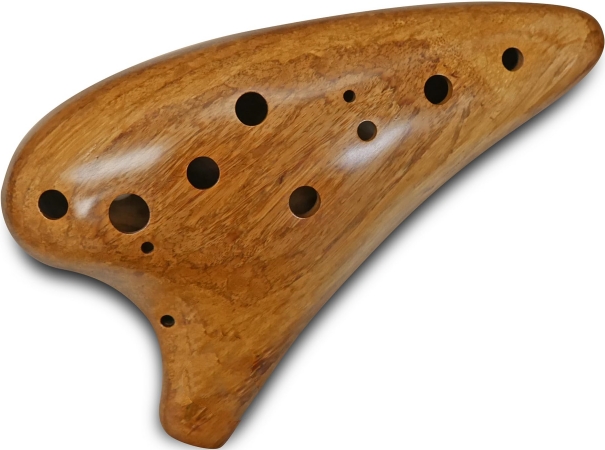
As we wrap up our journey into the world of crafting a Wooden Ocarina, you now have all the secrets to create your own melodic wonder.
The wood you’ve carefully selected will sing beautifully, and each note will be a testament to your creativity and love for music.
Now, it’s your turn to embark on this musical adventure.
Let your heart guide your hands as you craft a Wooden Ocarina that will serenade your soul and bring joy to anyone who hears its enchanting tunes. Happy crafting, fellow musicians! May your melodies fill the air with magic, one Ocarina at a time.
Can I use any type of wood to make a Wooden Ocarina?
While you have some flexibility in choosing the type of wood for your Wooden Ocarina, not all woods are suitable. It’s important to select hardwoods like maple, cherry, or walnut that have the right density and resonance for crafting musical instruments.
So, while you can’t use just any wood, you do have options to find the perfect fit for your Ocarina project.
How long does it take to make a Wooden Ocarina from start to finish?
The time it takes to craft a Wooden Ocarina can vary depending on your experience and the complexity of your design. On average, it may take several days to a few weeks to complete the entire process. It’s a labor of love that requires patience, but the result is a unique musical masterpiece that’s worth the effort.
Is woodworking experience necessary to make a Wooden Ocarina?
While some woodworking experience can be helpful, it’s not a strict requirement. With the right tools, guidance, and a willingness to learn, you can successfully craft a Wooden Ocarina as a beginner. Just be prepared to take your time and embrace the learning process as part of the fun.
Can I make a larger or smaller Wooden Ocarina?
Absolutely! You can customize the size of your Wooden Ocarina to some extent, which will affect the range of notes it can produce. However, keep in mind that altering the size may also require adjustments to the placement and size of the sound holes to maintain proper tuning.
Are there any specific safety precautions I should take while working with wood and tools?
Yes, safety first! When working with wood and tools, always wear appropriate safety gear like safety glasses and ear protection. Follow safety guidelines for each tool you use, and work in a well-ventilated area. Keep your workspace clean and organized to prevent accidents, and take your time to ensure precision in your craft while staying safe.


The ocarina is an ancient wind instrument known for its otherworldly and evocative sound. With a history spanning over 12,000 years across cultures worldwide, the

When it comes to taking care of your musical instruments, ocarina requires special attention, especially in terms of disinfection. Whether you’re a professional musician or
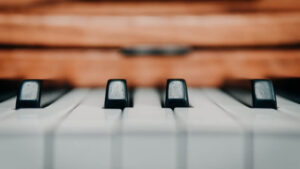
When it comes to preserving the charm and sound of your ocarina, storage is key. Just like a treasured book or a fine wine, your
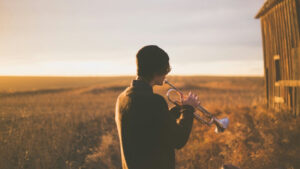
The world of music is filled with diverse and captivating instruments, and among them, the ceramic ocarina stands as a unique and charming creation. With

The ocarina is an ancient wind instrument known for its otherworldly and evocative sound. With a history spanning over 12,000 years across cultures worldwide, the

When it comes to taking care of your musical instruments, ocarina requires special attention, especially in terms of disinfection. Whether you’re a professional musician or

When it comes to preserving the charm and sound of your ocarina, storage is key. Just like a treasured book or a fine wine, your
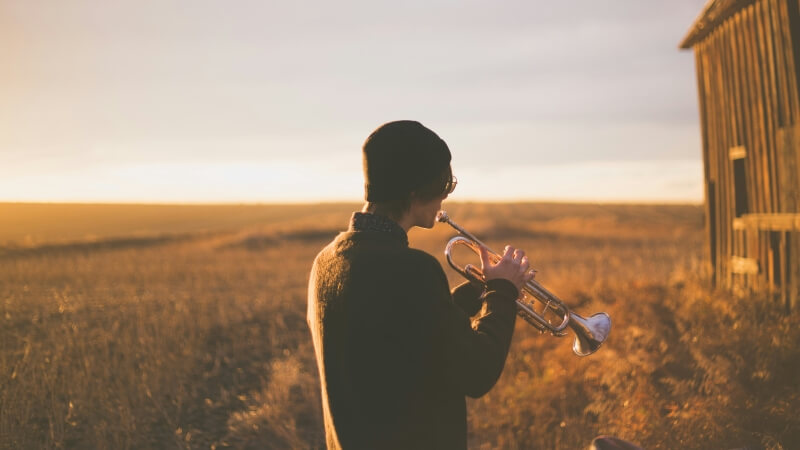
The world of music is filled with diverse and captivating instruments, and among them, the ceramic ocarina stands as a unique and charming creation. With
Copyright © 2024 echofluteocarinas. All Rights Reserved.